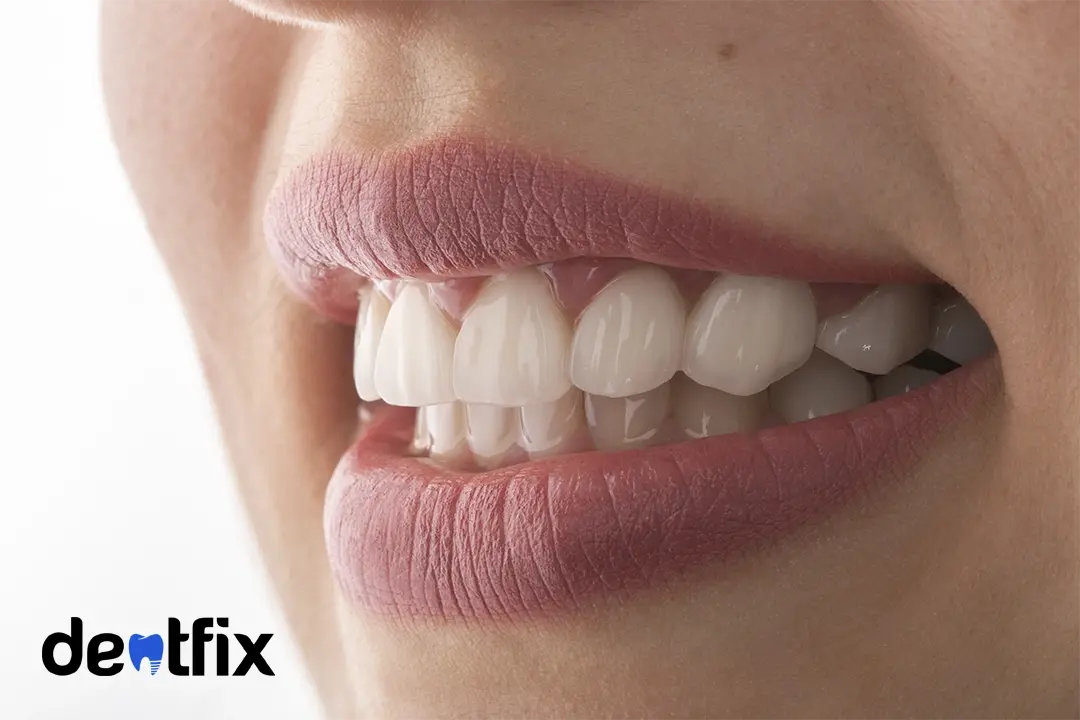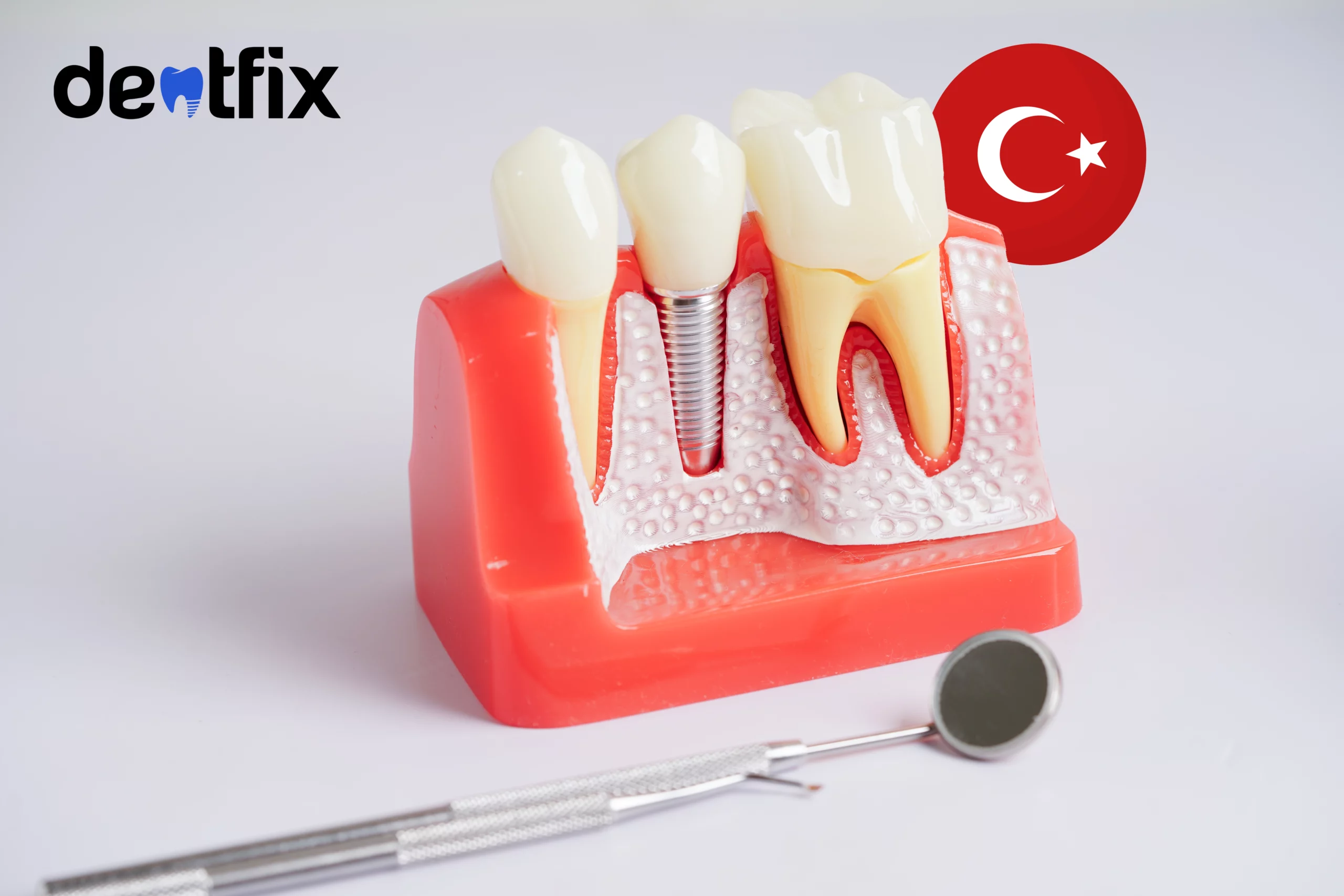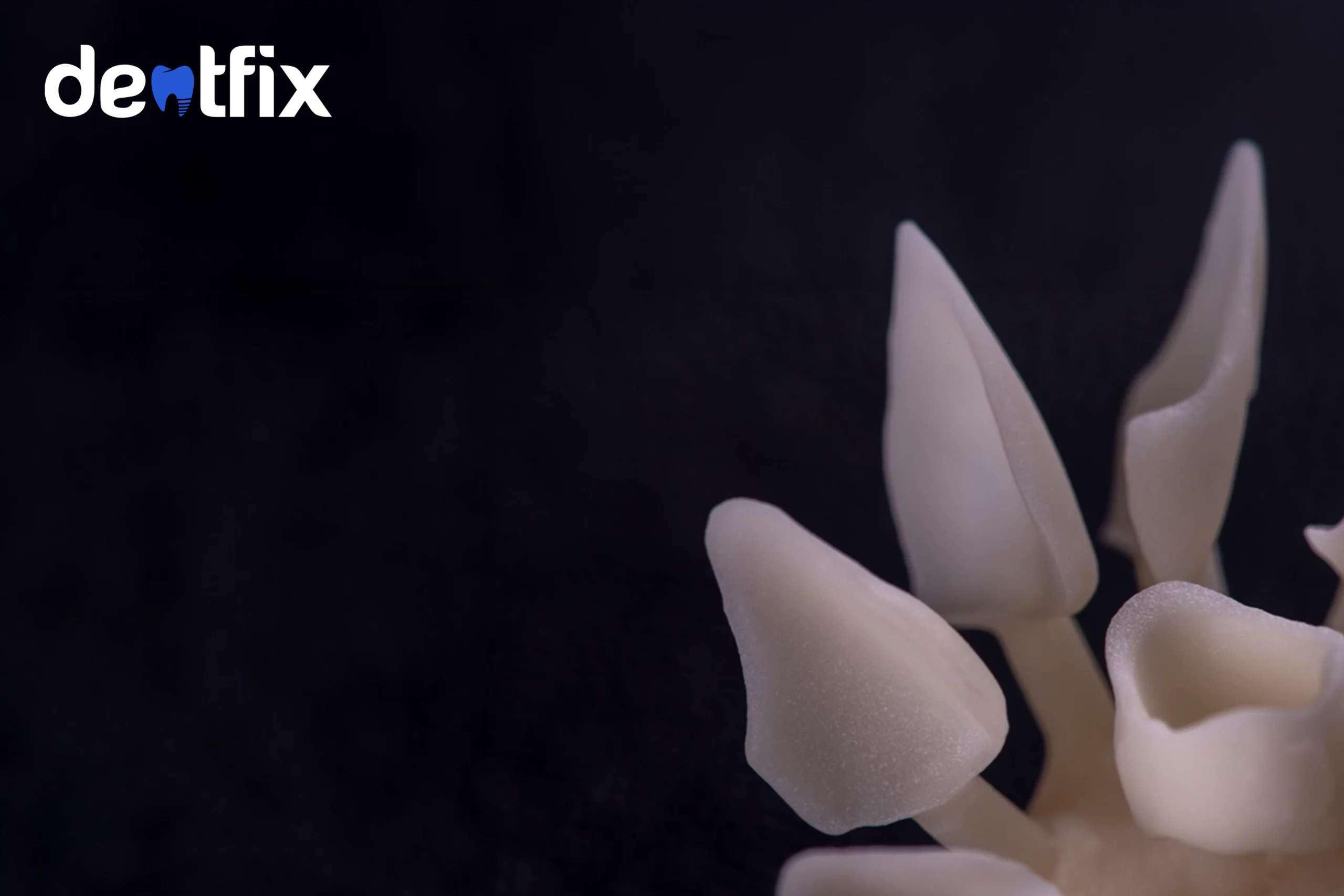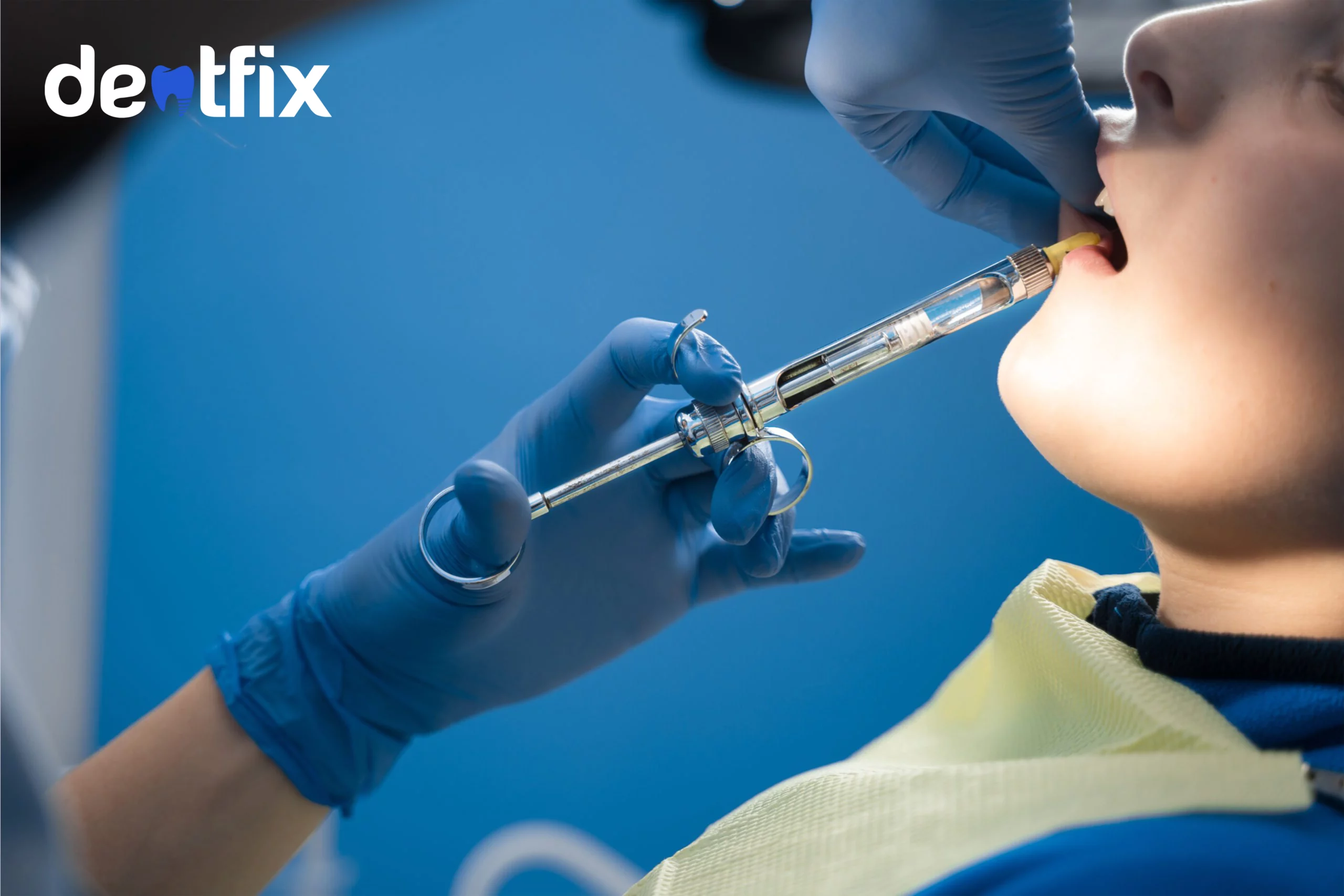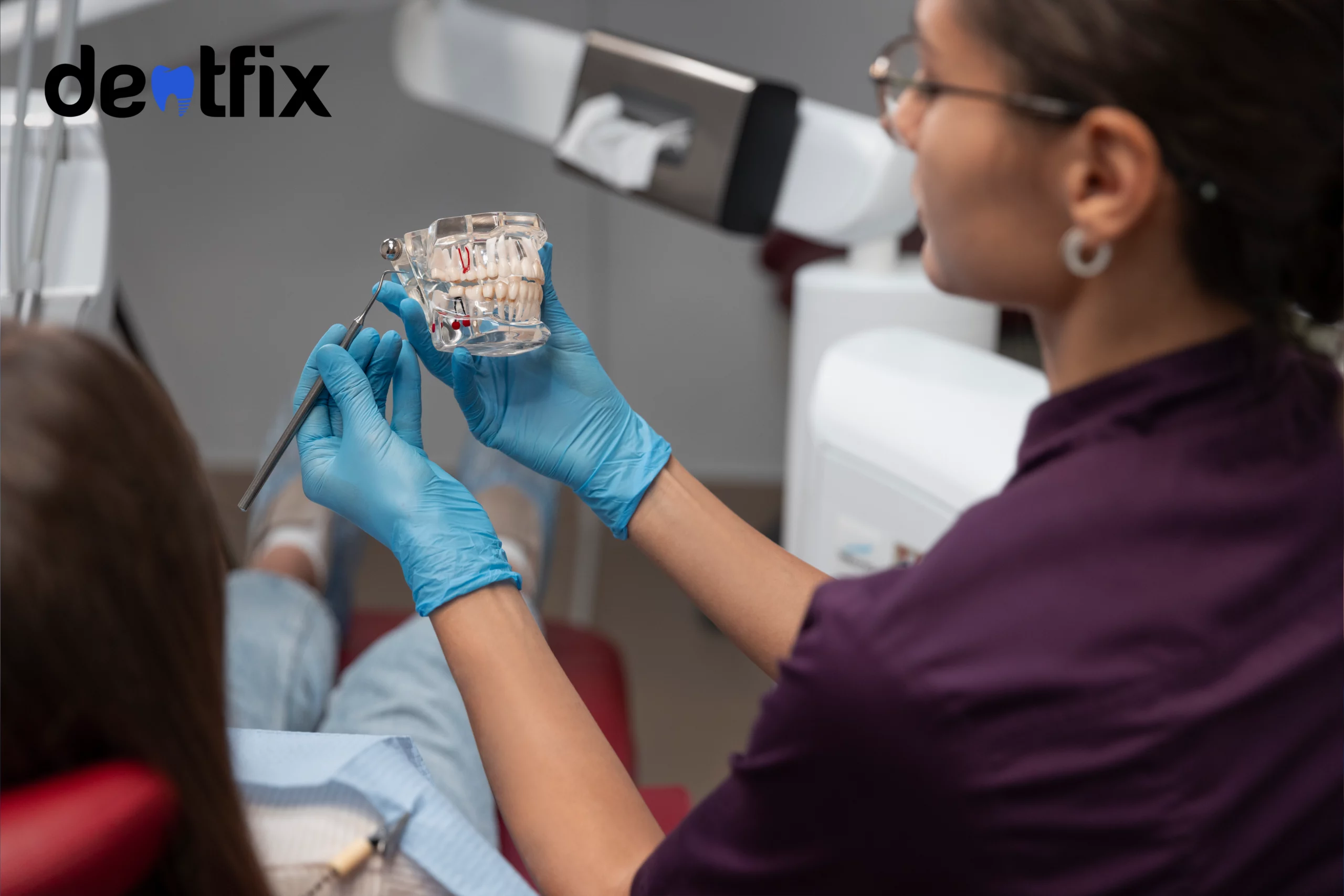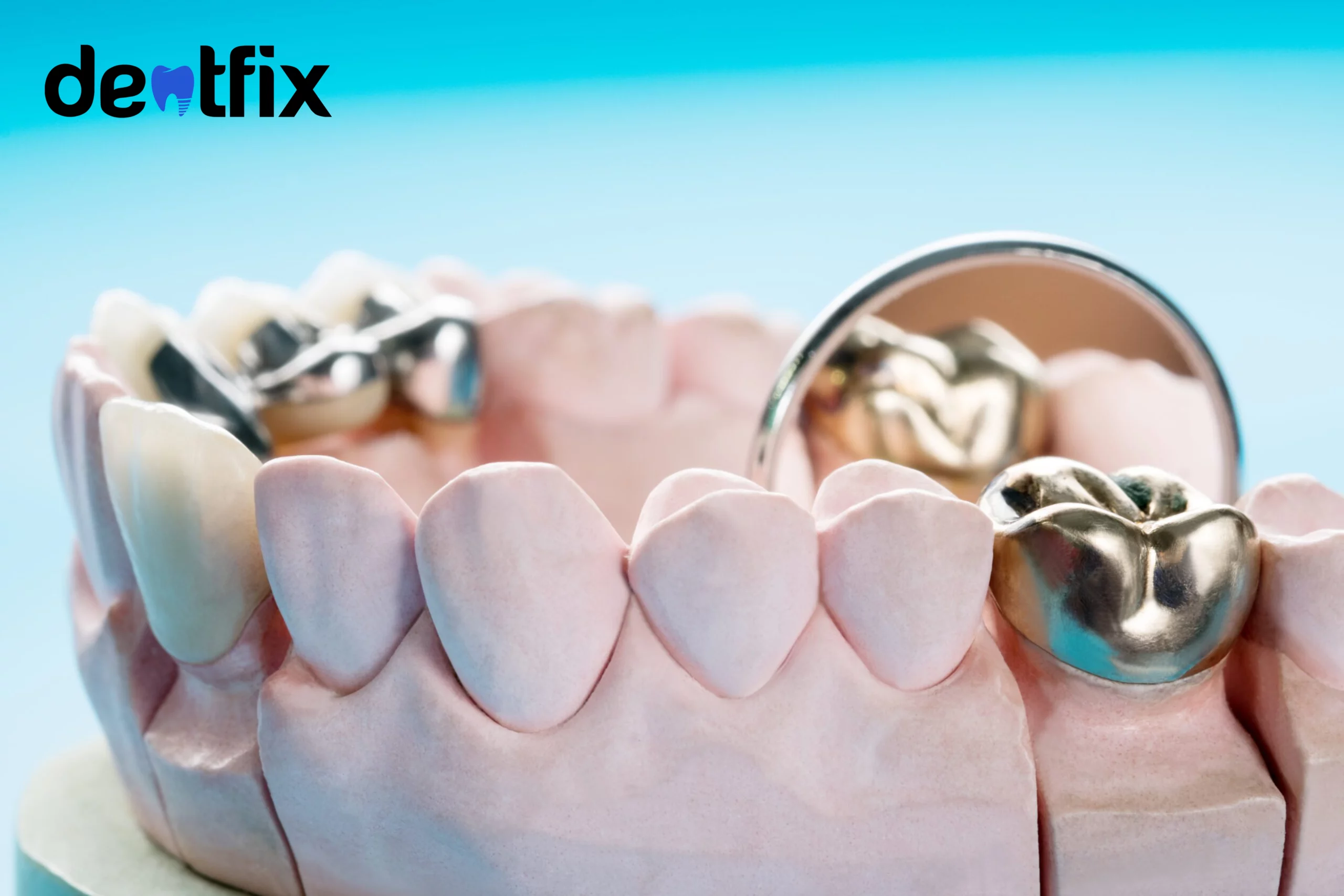Chapter 2: Types of Dental Crowns
Welcome to the second chapter of our dental crown guide where we take you through every type of crown, there is in the dental industry. You have read the first chapter on dental crowns, we hope. So, you know what they are.
In case you are not aware, there are many types of dental crowns available these days. From all-porcelain crowns to the most advanced E-MAX to the oldest metal crowns, there is a lot to choose from. They differ in cost, strength, aesthetics, and characteristics so you can choose the best type according to your priorities.
This article contains all the relevant info you may need if you are currently thinking about which crown to pick.
What are the different types of crowns?
Choosing the right type of dental crown is not so easy. This is due to their popularity and having many different types. To choose the best types of dental crowns you can ask for advice from your doctor. However, before visiting a dentist, it’s a good idea to learn about different types of dental crowns, their functions, and their benefits and disadvantages.
We will explain each type in detail in the next part. But for those of you who don’t have the time or energy to go through all those details, let’s have a quick look.
All-Porcelain: ones that can give you a glass smile
As porcelain is a specific kind of ceramic, the two names are used interchangeably to refer to these crowns. They can give a drastic transformation to your smile. Here are the main features of a full ceramic (all-porcelain) dental crown:
- Strength: If you’re looking for the strongest dental crown material, porcelain is not the one, even though its strength is noticeable. If used in opposing teeth, in the case of grinding, there’s a chance of greater wear.
- Aesthetics: Most all-ceramic crowns are made of porcelain. Nowadays, all-porcelain dental crowns are one of the most popular types, especially among patients who have aesthetic priorities and are looking for something that gives their front teeth a beautiful, yet natural look.
- Functionality: All-porcelain crowns are great to restore the structure of a damaged tooth. Particularly in cases of a root canal, with porcelain crowns, it is easier to build back the tooth’s lost structure. In cases of misshapen teeth as well as broken teeth, porcelain crowns can instantly transform the teeth. Porcelain has a high resistance to temperature changes. As a result, the possibility of further temperature sensitivity is reduced.
Yet still, choosing all-ceramic crowns or not depends on your situation and obviously, your doctor’s suggestion.
The fact that they’re entirely made of porcelain brings about some advantages and disadvantages:
Advantages of Ceramic Crowns:
- They are long-lasting (can last for up to 15-20 years with proper dental care)
- They are stain-resistant
- They look natural
- They are biocompatible i.e. one does not have to worry about allergies
- The fit is better as compared to other materials such as metals
- They are not high maintenance, i.e. you don’t have to make frequent dental visits
Disadvantages of ceramic crowns
- The price can be slightly higher
- Sensitivity can increase because of major tooth alterations
- They can crack if you consume hard foods too much
Porcelain-fused-to-metal: you get the best of both worlds, kinda
If you’re looking for a crown that boasts both aesthetics and strength, the porcelain-fused-to-metal is a good choice. The metal gives the crown durability whereas porcelain gives a glass-like finish to the exterior.
- Strength: The two main materials of this crown, porcelain, and metal, are both fairly strong when it comes to bearing a long time of wear and tear. On top of that, they’re more affordable compared to all-ceramic crowns.
- Aesthetics: This type of crown merges the best of two worlds: porcelain and metal. The metal underneath gives it unmatched strength while the porcelain revitalizes the exterior.
- Functionality: First created in the late 1950s, porcelain fused to metal crowns first became famous for their superior aesthetics. Over time they also came to be known for their strength due to metal alloys. Thus, now they are also used as dental bridges in case someone has missing teeth.
But we do not advise you to use for PFMs if you’re too sensitive about the appearance of your teeth. Despite the porcelain exterior, there is a metal part in the bottom of the crown, which may result in a grey line at your gum line.
Advantages of porcelain-fused-to-metal crowns:
- They are good alternatives to full porcelain and zirconia.
- Cost-effective
- They are strong because of the use of metal.
- They are stain-resistant
Disadvantages of porcelain-fused-to-metal crowns:
- They are not as sustainable as full porcelains.
- Less than favorable aesthetics due to the grey line that shows on the gums.
- Invasive procedure
Zirconia: where the beauty lies
During the last two decades, zirconia crowns have gained popularity. According to Dentistry Today, they became popular in the 2000s when “CAD/CAM was introduced in the dental laboratory process.” Since then they are considered a much more affordable, yet effective replacement for expensive gold crowns.
- Strength: According to several studies, the strength of zirconia crowns is 900-1200 MPa, and fracture resistance strength of 9-10 mPa. This strength level makes zirconia crowns a lot tougher with a longevity of 25-30 years with good oral hygiene.
- Aesthetics: The traditional zirconia crowns are opaque in appearance and that makes them look not very natural. They are mostly considered more for posterior (back) teeth because they provide more strength than aesthetic value.
- Functionality: The best part about these crowns is that not a lot of teeth structure needs to be removed to place them. Due to their exceptional strength, they function more successfully when placed on the posterior teeth.
Advantages of Zirconia crowns:
- Strongest among dental crowns
- Highly shock-resistant
- Stain-resistant
- Temperature resistant
- Biocompatible
- Easily modifiable
- Same-day placement
Disadvantages of Zirconia crowns:
- Less likely to blend with your real teeth because of its opaque appearance
- Can wear down the enamel of surrounding teeth because of its exceptional strength
- High price
Metal crowns: strength over everything else
Although the world has shifted to modern-day dental restorations but metal crowns are still readily available today. These crowns are available in palladium, gold, silver, nickel, or chromium.
- Strength: Even though traditional but these crowns offer maximum protection to damaged teeth. They have fractural strength and are highly resistant to chipping or breaking. They can easily last for at least 15 years with a proper oral care routine.
- Aesthetics: Although they offer maximum protection to the teeth they look artificial and can be seen immediately. Therefore, if you are looking for a crown that improves your smile, this may not be the right choice. However, if dental health is your concern, these crowns can provide you with just that.
- Functionality: Metal crowns can preserve and restore the health of a tooth because of their high fractural strength. They tend to be better for the posterior teeth rather than the anterior because of their artificial appearance.
Advantages of metal crowns:
- Stronger and sturdier than other crown materials
- Works better for people who suffer from bruxism
- With proper dental hygiene, they can last for at least 10 to 15 years or more
- In case of extreme damage, they restore the health of the tooth
- They are economical in terms of price
Disadvantages of metal crowns:
- They look artificial
- They can increase dental erosion in surrounding teeth because of high-force bite
- Frequent dental maintenance
E-max crowns: say yes to a flawless smile
As one of the latest inventions among dental crowns, E-max crowns are fast gaining popularity in the dental industry. They are now considered one of the most reliable CAD/CAM (digitally designed) crown materials.
- Strength: E-max crowns are made of lithium disilicate, a glass-ceramic molded into aesthetically pleasing dental crowns. According to a study, E-max crowns offer fractural strength of 500-530 when bonded. They serve as a great alternative to PFM crowns because they offer adequate strength, high esthetics, and same-day placement.
- Aesthetics: E-max crowns are known for their aesthetic qualities such as their translucency. They are made from all-glass ceramics allowing them to look refined and natural. Overall you can expect them to blend right in with your real teeth.
- Functionality: Since E-max crowns are created through CAD/CAM technology, their shape/size is much more accurate. This is why they not only look aesthetically pleasing but also protect the tooth from further damage. In terms of positioning, they are more suitable for anterior teeth because of superior esthetics.
Advantages of E-max crowns:
- Superior esthetics
- Same-day placement
- Accuracy in design
- Good fractural strength
- Stain-resistant
- Natural appearance
- Minimal tooth alteration
Disadvantages of E-max crowns:
- Prone to chipping
- High cost
- Not ideal for posterior teeth
Composite crowns: best temporary fix for your smile
Readily available as temporary crowns, composite crowns are a lot more common than you think. Their crowns procedure is much faster than other crowns this is why people opt for them for different reasons.
- Strength: Composite crowns are mostly made of resin material which is inexpensive and does not need a long time for preparation. They provide medium strength and cannot last more than 5 years maximum. They tend to chip off or stain much faster than the other materials.
- Aesthetics: Composite resin does not provide the most realistic results. However, they are customizable and easy to produce so it is easy to achieve desirable results with the right dentist.
- Functionality: Resin is usually used for temporary dental concerns but it could be used as a permanent solution as well. They are mostly placed during the period when the patient is waiting for their final crown to arrive. They serve as filler crowns to save the tooth from any damage during this time. When they are placed permanently, dentists usually use them to protect the tooth after restorative dental procedures such as root canals.
Advantages of composite crowns
- Low price
- Easily accessible
- Single-day procedure
- Easy to modify or replace
- Conservative procedure
Disadvantages of composite crowns
- Not that strong
- They stain or chip easily
- Risk of mercury toxicity that could affect lungs and kidney
How long do crowns last?
When you think “How long do crowns last?” you should know it depends on the materials they are made of. The longevity of crowns depends on the material you choose. Most crowns can last for about 15 to 20 years including porcelain, metals, and zirconia. Other materials such as composite resin and acrylics do not last very long and are mostly used as temporary crowns.
What are temporary crowns?
Crowns are not temporary and are expected to last for 15 years. It is possible that while your permanent crowns are being prepared, your dentist provides you with some temporary crowns. Temporary crowns are necessary during the waiting period so you can eat without any complications.
How to choose the right type of dental crowns?
Depending on whether you need a dental crown for your dental health or aesthetic purposes, there are certain factors to keep in mind. For instance, if what you need is a natural appearance, three main factors may influence this decision:
- cost
- strength
- durability
Cost
Budgeting your dental treatment is one of the most important aspects. When choosing a suitable dental crown, always keep the cost in mind. Once you set a budget for yourself, you can narrow down your choices. Our article on the cost of dental crowns is a must-read when making a decision!
Strength
The strength of a dental crown is also a crucial factor. Crowns with lower strength do not last a long time and go through chips and breakage. It is important to choose a crown that is resistant to chipping and damage.
Durability
Nobody likes to go back to the dentist again and again for crown complications. This is why it is important to choose a type of dental crown that can last you a long time without problems. It is better to choose something more durable even if the price is slightly higher.
Why do some crowns look fake?
A common concern among people is why some crowns look fake. Most crowns look fake because of poor quality and lack of skill. Crowns look fake when they do not reflect light and/or do not match the rest of the teeth.
Cheap quality crowns made of acrylics tend to look fake and are easy to spot when a person smiles. It is also crucial that you choose a qualified dentist with modern facilities. A lot of times, poor skill also shows along with manufacturing errors. Thus, it is best to do your research before getting crowns.
How to choose an ideal treatment plan for crowns?
Moreover, there are some other points that your dentist must consider when choosing your ideal treatment plan. For instance, if you need an aesthetic appearance and a natural smile, your needs are different from someone else who needs their teeth repaired.
During this process, your dentist takes into consideration various items: When selecting the material for your crown, your dentist will consider factors such as:
- Color of the adjacent teeth
- The location of your tooth
- The function of your tooth (incisors, canines, premolars, molars)
- The proportion of your tooth that is seen when smiling
- The position of your gum tissue
- How much of your natural tooth should remain
More importantly, your dentist will listen to your preference, and then together, you will make a decision.
What should I tell my dentist before choosing the crowns?
We get to hear this one a lot! What should I tell my dentist before choosing the crowns? Well, it’s not that complicated, all you have to do is to share your priorities with the dentist. It is important to be on the same page so there are no issues later on. First, you must determine along with your dentist if you need crowns for aesthetic reasons or general oral health. Here are the top five factors to discuss with your dentist before choosing the crowns:
- Your current oral health situation
- What is your budget
- What material suits your oral health and budget
- Your aesthetic needs if any
- If you suffer from bruxism (perpetual teeth grinding)
What are onlay crowns and 3/4 crowns?
A full crown is usually needed when the entire tooth is decayed and a considerable amount needs to be removed for placing the crown. On the contrary, dental onlays are partial crowns that are needed when the cavity has affected a slight portion of the tooth.
Similarly, 3/4 crowns also refer to crowns placed on the 3/4 area of your tooth. Dentists usually thoroughly examine your molars and premolars to determine the size of the crown needed.
